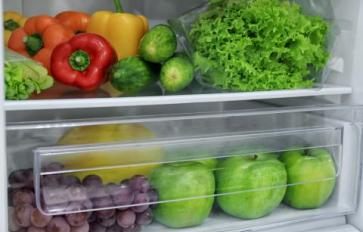
What does it take to be a really, truly, textbook vegan?
When I started eating vegan, I was in college and had already eaten meat-free for most of my life. Cutting out eggs and dairy turned out to be pretty easy for me, so I labeled the transition from vegetarianism to veganism a success and didn’t think much more about it.
When I moved across the country and started furnishing my apartment, I was blind to the reality that veganism doesn’t just disappear when the meal’s over. Was that sofa made of leather? Were the pillows filled with down? Those cozy socks, my favorite, the ones that helped me survive a Philadelphia winter without a heater—were they wool? I don’t remember. I didn’t care. Even if my brain knew that wool came from sheep and leather came from cows, I wasn’t ready to acknowledge the most inconvenient truths about what it means to be a fully committed vegan.
That said, I don’t think it has to be all or nothing—we do a lot for our health, animal welfare, and the planet whether we eat vegan once a week or incorporate vegan principles into every aspect of our lives. I’m not interested in judging “good” from “bad” vegans. I strongly believe that veganism—and the extent of your veganism—is a deeply personal choice based on a number of complex factors.
Personally, I’m working on extending the values behind my food choices to the rest of my life, and below are some of the areas I’m targeting and the resources I’ve culled. During my research, I’ve found some non-vegan items that surprised me (bike tires?). If you’re also ready to grow your veganism, check out the trouble spots I’ve identified, and if you’d like, add your own in the comments section.
WARNING: If you’d rather be blissfully ignorant about the ingredients in your favorite food products and household goods, I totally understand. Just don’t read any further.
Food That's Not Vegan
There are countless ways animal products “disappear” into food, but here are a few to be aware of:
- Foods that are omega-3 enriched: Be wary of any products, like Tropicana Heart Healthy Orange Juice, that are enriched with omega-3s (this Tropicana drink derives its omega-3s from fish oil). (Get your omega-3s in plant-based foods instead.)
- Milk and/or eggs in breads like bagels, English muffins, and pizza dough (make your own instead).
- White AND brown sugar: Many of us have heard that white sugar is often processed with bone char, but some types of brown sugar are processed the same way (and then dyed brown). If you’re not ready to give up the sweet life, buying organic limits the chances your sugar was processed with bone ash.
- Vegetable soups: Check for chicken or beef broth in packaged and restaurant soups.
- Gelatin: You know to avoid marshmallows and Jello, but what about Altoids, Frosted Mini Wheats, gummy candies, Planters dry roasted peanuts, Pop Tarts with frosting, and candies like Skittles and Starbursts? All contain gelatin.
- Artificial red dye: It’s often made with cochineal (smashed beetles), and labeled “color added,” so it’s hard to spot. Cochineal is present in Ocean Spray Ruby-Red Grapefruit Juice, Minute Maid Ruby Red Grapefruit Juice, Nerds Candy, and Mango Snapple, among other foods and beverages.
- Worcestershire sauce: Check the ingredients list for anchovies.
- L-cysteine: A dough conditioner and flavor enhancer, it’s often derived from duck feathers, and sometimes even human hair. Although there are synthetic L-cysteines, it seems these are expensive and not often used. I’m trying to get into the habit of checking any processed food label for this ingredient.
- Confectioners glaze: It’s found in sprinkles, decorating sugars, and candy coatings, and made from sticklac, a resinous secretion from the lac insect.
- “Natural” flavoring: Companies aren’t required to disclose whether their flavoring comes from plant or animal sources, so to know for sure, you might want to contact the company in question and ask.
- Unfortunately, many medications. Gelatin, lactose, shellac (insect resin), and stearic acid (derived from animal fat) are all extremely common non-vegan ingredients in prescription drugs. If you don’t have a serious health condition, you might consider natural alternatives.
There’s also the question of whether food is processed on equipment shared with animal products, commonly milk, eggs, and fish. Companies list common allergens that are handled at the facility, but aren’t required to list every ingredient that may have come in contact with your food. If you’re buying prepackaged meals or snacks and are worried about their contact with animal products, look for a vegan safe culinary label.
What About Vegan Wine & Beer?
Wine is made with grapes, yeast…and lots of other things. In an article for Food & Wine magazine titled “What’s Really in Your Wine?,” Cork Dork author Bianca Bosker writes that winemakers have at their disposal “around 60 different products to remedy flaws and tease out flavors,” and “there’s no law requiring bottles to be labeled with these ingredients.” Wine is often clarified using gelatin, isinglass (fish bladder), bone marrow, and casein (a milk product), and occasionally, beer is also clarified with gelatin and isinglass. Wine also comes in contact with the leather components of oak barrels. I use Barnivore’s vegan wine, beer, and liquor directory regularly to choose wines that are vegan friendly.
Makeup & Self-Care Products
Even though skin is our largest organ, we often forget that much of what we put on it ends up inside our bodies. If you’re ready to extend your veganism to your makeup and self-care products, avoid these ingredients (list adapted from an article by One Green Planet):
- Carmine: Another name for cochineal (again, crushed beetles…), look for this dye in blush and lipsticks.
- Lanolin: An animal excretion—check lipsticks and makeup removers.
- Guanine: From fish scales, it gives mascara and nail polishes their luster.
- Tallow: It’s an animal fat used in many beauty products, from foundations to lipstick.
- Squalene: Extracted from shark liver, it’s also found in a variety of makeup products.
- Gelatin: The boiled bones and ligaments of animals give a smooth application for creams and nail polishes. Gelatin hides in ingredient lists as gel, hide glue, isinglass, kosher gelatin, or halal gelatin.
- Collagen: Some skincare brands include this animal tissue protein in the hopes that it will increase the consumer’s own collagen production. Studies don’t support this theory.
Many vegans also avoid products that have been tested on animals. PETA, Cruelty-Free International, and Choose Cruelty-Free all have rabbit/bunny logos to indicate a cruelty-free product.
One great way to avoid animal ingredients in your beauty products is to make your own (try these recipes for hair care). Vegan brands are also becoming mainstream. Makeup and skincare emporium Sephora carries products from Bite Beauty, Gloss Moderne, LXMI, Tatcha, and Sweat Cosmetics—all vegan.
Keep Your Clothes Vegan
Clothing is the one area where I actually find it pretty convenient to be vegan. Faux leather and faux suede cost a fraction of the price of the real thing, and I can find boots and sandals made from man-made materials at almost any department or chain store. Wool and silk, other non-vegan materials, are also more expensive than vegan alternatives like cotton, nylon, and polyester.
PETA has a great guide for shopping for vegan clothing, including brands to look for and a list of online vegan retailers.
Home Goods & Everyday Items
Here are some everyday items that aren’t vegan—some may surprise you:
- Plastic bags: Their slipperiness usually comes from animal fat. You’re bringing your own bags to the store, right?
- Art supplies: According to EmptyEasel, charred bones create Ivory Black and Bone Black pigments. Other common paint ingredients include the red dye cochineal (smashed insects), ox gall (from cows, present in most watercolor paints), and sepia ink (from squid and cuttlefish). Artist’s pencils sometimes contain beeswax, water resistant inks usually contain animal ingredients, and oil pastels contain animal fat. The EmptyEasel site has a great page detailing how to find vegan-friendly paints, inks, pencils, and paper.
- Car and bike tires: Most contain stearic acid (which comes from animal fat). According to The Flaming Vegan, Michelin tires are vegan-friendly.
- Fabric softener: Check the label for dihydrogenated tallow dimethyl ammonium chloride, present in brands like Downy.
I’m sure as I continue my vegan journey, I’ll discover more hidden non-vegan ingredients. For now, the list above is keeping me busy as I work towards living a more vegan life.
What did I miss? Share your discoveries in the comments section below.








